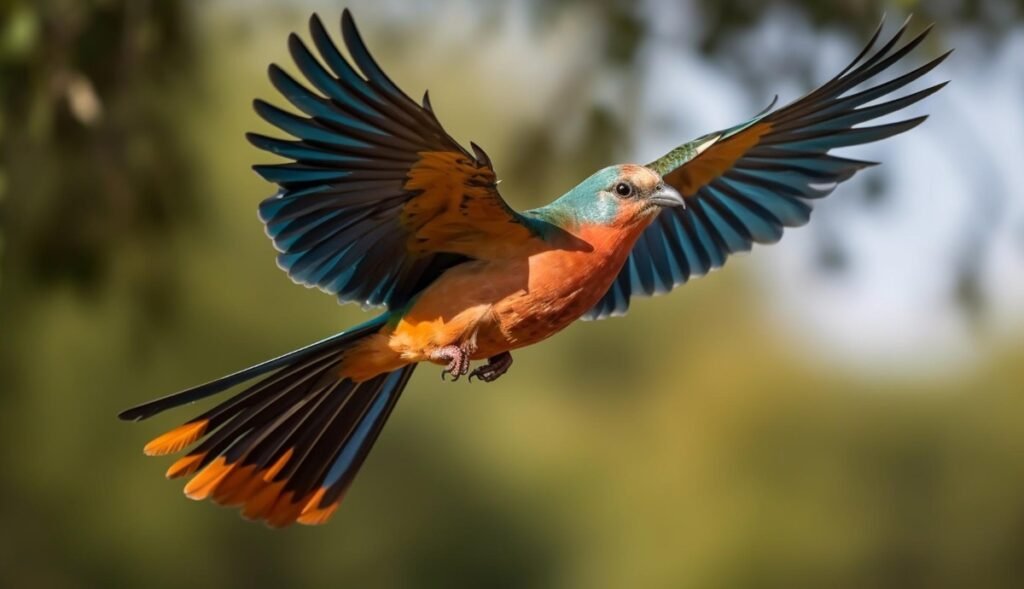Birds are one of the most fascinating and diverse groups of animals on our planet. With over 10,000 different species, they can be found in almost every habitat on Earth, from the frozen tundra to the hottest deserts. But have you ever stopped to think about what group birds actually belong to? In this article, we’ll explore the answer to this question and delve into the fascinating world of bird classification.
What Group Do Birds Belong To?
Birds are a type of animal known as vertebrates, which means they have a backbone or spinal column. They are also a type of reptile, although this may seem surprising given their feathers and ability to fly. Birds evolved from a group of reptiles called theropods during the Jurassic period, around 150 million years ago.
Classification of Birds
Birds are classified into different groups based on their physical characteristics and evolutionary relationships. The most widely used classification system is the Linnaean system, which divides birds into several major groups. These include:
- Class: Aves
- Order: Various orders, such as Passeriformes (songbirds), Charadriiformes (shorebirds), and Falconiformes (birds of prey)
- Family: Various families, such as Turdidae (thrushes) and Corvidae (crows and jays)
- Genus: Various genera, such as Turdus (thrushes) and Corvus (crows and jays)
- Species: The specific species of bird, such as Turdus migratorius (American robin) or Corvus brachyrhynchos (American crow)
Why Does Classification Matter?
Classification is important because it helps us understand the relationships between different species and how they have evolved over time. It also provides a framework for organizing and communicating information about different species. In the case of birds, classification helps us understand their unique characteristics and behaviors, and how they fit into the broader context of the natural world.
In this article, we’ll explore the different groups that birds belong to, and why classification is important for understanding these fascinating creatures. Whether you’re a seasoned birdwatcher or just starting to learn about birds, this article will provide a comprehensive overview of the world of bird classification.
What Group Do Birds Belong To?
Birds are one of the most diverse and fascinating groups of animals on the planet. With over 10,000 different species, they can be found in almost every habitat on Earth, from the frozen tundra to the hottest deserts. But what group do birds belong to, exactly? In this article, we’ll explore the answer to this question and delve into the fascinating world of bird classification.
A Brief History of Bird Classification
The classification of birds has a long and complex history. In the 18th century, Carolus Linnaeus, a Swedish botanist and zoologist, developed the system of binomial nomenclature that is still used today to classify living organisms. Linnaeus grouped birds into a single class, Aves, which was divided into several orders, such as Passeriformes (perching birds) and Charadriiformes (shorebirds). (See Also: How To Tame Birds)
However, as more species of birds were discovered and studied, it became clear that the original classification system was not sufficient to accommodate the diversity of bird life. In the 19th century, ornithologists such as John James Audubon and Charles Lucien Bonaparte developed more detailed classification systems, which grouped birds into families and genera.
The Major Groups of Birds
Today, birds are classified into several major groups, which are based on their evolutionary relationships and physical characteristics. The major groups of birds are:
- Neornithes: This group includes all modern birds, including songbirds, waterfowl, and birds of prey.
- Palaeognathae: This group includes ratites, such as ostriches and emus, as well as kiwis and rheas.
- Galloanserae: This group includes game birds, such as turkeys and pheasants, as well as waterfowl, such as ducks and geese.
- Neoaves: This group includes all modern birds, excluding ratites and game birds.
The Characteristics of Birds
So, what are the key characteristics that define birds as a group? Some of the most important characteristics include:
- Feathers: Birds are covered in feathers, which provide insulation, support, and protection.
- Wings: Birds have wings, which are modified forelimbs that allow them to fly.
- Beak: Birds have a beak, which is a hard, keratin-based structure that is used for eating, preening, and other activities.
- Light skeleton: Birds have a lightweight skeleton, which is made up of hollow bones and air-filled cavities.
- Lay eggs: Birds are oviparous, which means that they lay eggs outside of their bodies.
The Evolution of Birds
The evolution of birds is a complex and still somewhat mysterious process. However, scientists have pieced together a general outline of how birds evolved from their reptilian ancestors.
It is believed that birds evolved from a group of theropod dinosaurs called maniraptorans, which included the well-known Velociraptor and Oviraptor. These early birds, such as Archaeopteryx, had many reptilian characteristics, including teeth and a long bony tail.
Over time, birds evolved to become more specialized for flight, with the development of wings, hollow bones, and lightweight skeletons. They also developed new characteristics, such as feathers, beaks, and the ability to lay eggs. (See Also: When Do Birds Come Back From Migration)
Conclusion
In conclusion, birds are a diverse and fascinating group of animals that have evolved over millions of years. From their reptilian ancestors to the modern species that we see today, birds have developed a range of unique characteristics that set them apart from other animals. By understanding the classification and characteristics of birds, we can gain a deeper appreciation for the natural world and the incredible diversity of life on Earth.
Recap
In this article, we explored the question of what group do birds belong to. We discussed the history of bird classification, the major groups of birds, the characteristics of birds, and the evolution of birds. We also learned about the different types of birds, including songbirds, waterfowl, and birds of prey. By understanding the classification and characteristics of birds, we can gain a deeper appreciation for the natural world and the incredible diversity of life on Earth.
Here are five FAQs related to “What Group Do Birds Belong To”:
FAQs: What Group Do Birds Belong To?
What is the scientific classification of birds?
Birds belong to the class Aves, which is a group of warm-blooded vertebrates that are characterized by feathers, toothless beaks, and lightweight skeletons. The class Aves is further divided into several orders, families, and species.
Are birds mammals or reptiles?
Birds are neither mammals nor reptiles. They are a distinct group of animals that have evolved separately from these two groups. While birds share some characteristics with mammals and reptiles, they have many unique features that set them apart. (See Also: Where To Buy Talking Birds)
What is the closest relative of birds?
The closest relatives of birds are theropod dinosaurs, which were a group of meat-eating dinosaurs that lived during the Mesozoic Era. In fact, many scientists believe that birds evolved directly from a group of theropod dinosaurs called maniraptorans, which includes the well-known Velociraptor and Oviraptor.
Are birds a single group or are they divided into different groups?
Birds are divided into several different groups, including orders, families, and species. The most widely used classification system for birds is the International Union for Conservation of Nature (IUCN) classification system, which recognizes 24 orders of birds, including waterfowl, songbirds, and raptors.
How are birds classified into different species?
Birds are classified into different species based on their physical characteristics, behavior, and genetic makeup. Taxonomists use a variety of criteria to distinguish between different species of birds, including the shape and size of their beaks, the color and pattern of their feathers, and their mating and breeding habits.


